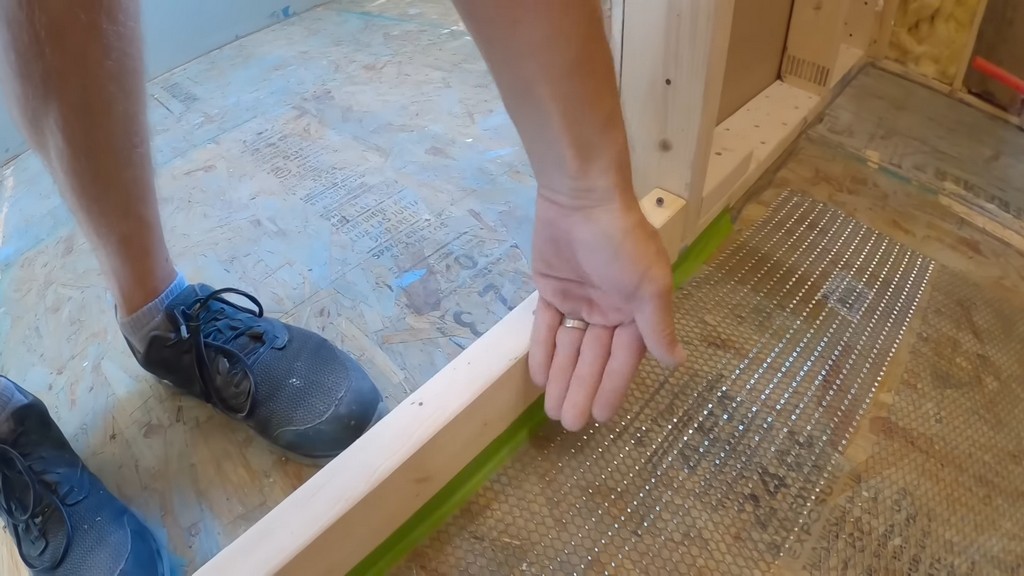Wood stove hearth pads need to be made of fire-resistant materials like ceramic, stone slabs, or metal sheets. They must meet clearance requirements specified in the stove’s owner’s manual.
When installing or replacing a wood stove, the size of the hearth pad is crucial for safety and compliance with building codes. Incorrect sizing can lead to heat damage or fire hazards. It is essential to follow guidelines carefully for the hearth pad’s thickness and material to ensure proper insulation and protection.
By understanding the requirements and selecting the appropriate materials, homeowners in Austin, Texas can enjoy a safe and efficient wood stove setup in their homes.


Credit: mffire.com
Choosing The Right Material
Choosing the right material for your wood stove hearth pad is crucial. Options such as ceramic tiles, cement boards, stone slabs (such as granite or slate), metal sheets, hearth rugs, and fire-resistant boards are all suitable choices. It is important to consider the material’s ability to withstand high temperatures associated with burning wood and solid fuel.
Natural Stone Options
Natural stone is a popular choice for wood stove hearth pads due to its durability and heat resistance.
Other Suitable Materials
- Ceramic tiles: Provide a stylish and heat-resistant option.
- Cement Board: Offers strength and fire resistance.
- Granite Slabs: Known for their durability and aesthetic appeal.
- Metal sheets: Provide a modern and industrial look.
- Fire-Resistant Boards: Offer flexibility and protection.

Credit: forgenflame.com
Sizing And Placement
To meet wood stove hearth pad requirements, consider the stove’s dimensions, including clearance and heat output. Recommended materials for a hearth pad include stone, metal sheets, fire-resistant boards, and ceramic or porcelain tiles. The size and placement of the hearth pad should adhere to local building codes and installation guidelines provided in the stove’s manual.
Minimum Size Requirements
Boldly adhere to the minimum size requirements to ensure optimal safety and compliance. The hearth pad must extend at least 18 inches beyond all sides of the stove to prevent heat transfer to combustible materials.
Placement Considerations
Proper placement of the hearth pad is vital for safe wood stove operation. The hearth pad should be level, stable, and non-combustible. Avoid placing the wood stove on carpet or other flammable surfaces.
Diy Options And Tools
When it comes to creating a DIY hearth pad for your wood stove, it’s essential to consider the correct dimensions and materials to ensure safety and compliance with building codes. DIY options can provide cost-effective solutions for homeowners, but proper measurements and tools are critical for a successful project. Below, we break down the key aspects to consider, along with the necessary tools and guidance for achieving the right corner hearth pad dimensions.
Diy Hearth Pad Calculator
One of the crucial aspects of creating a DIY hearth pad is calculating the correct dimensions based on your wood stove’s requirements. You can use a DIY hearth pad calculator to determine the ideal size for your hearth pad, considering the clearance requirements and space available in your room. This tool can help you accurately measure and plan the dimensions of your hearth pad, ensuring it meets the necessary safety standards.
Corner Hearth Pad Dimensions
Corner hearth pad dimensions are essential for accommodating your wood stove while maintaining a safe distance from combustible materials. When constructing a corner hearth pad, it’s important to ensure that the dimensions align with the specific requirements of your wood stove model and local building codes. Using the right tools, such as a level, measuring tape, and safety equipment, is crucial for accurately shaping and building the corner hearth pad to the appropriate dimensions.
Local Regulations And Compliance
Ensure compliance with local regulations for wood stove hearth pad installation by understanding thickness. Common materials like ceramic tiles, stone slabs, and fire-resistant boards are suitable options to meet requirements. Check manufacturer guidelines for proper sizing to adhere to safety standards.
State-specific Requirements
When it comes to wood stove hearth pad requirements, it’s important to understand that local regulations and compliance vary from one state to another. Each state may have its own set of rules and requirements that must be adhered to. Being aware of these state-specific requirements is crucial to ensuring the safety and legality of your wood stove installation.
If you’re located in Austin, Texas, for example, you would need to familiarize yourself with the hearth pad regulations set by the local authorities. These regulations may include specifications regarding the size, thickness, and material of the hearth pad.
Understanding R-value
One factor that may influence the hearth pad requirements is the R-value. R-value refers to the thermal resistance that a material offers. It measures how effectively the material can resist the transfer of heat. In the context of wood stove hearth pads, a higher R-value indicates better insulation and heat protection.
The R-value of a hearth pad material is determined by its thickness and composition. For instance, thicker materials, such as stone or ceramic tiles, generally have higher R-values and provide better heat protection. It’s crucial to ensure that the hearth pad you choose meets the required R-value specified by your local regulations.
In addition to understanding the R-value, it’s essential to choose a material that can withstand the high temperatures produced by a wood-burning stove. Stone materials like slate or granite are among the best options because of their durability and heat resistance. However, contemporary stove installations may also utilize steel or toughened glass hearth pads.
To determine the appropriate size and shape of your hearth pad, consult your wood stove’s owner’s manual. It typically provides information about the required clearance and dimensions for the hearth pad. Following these guidelines ensures that your hearth pad satisfies both the manufacturer’s recommendations and the local regulations.
Remember, each state may have different requirements when it comes to wood stove hearth pads. Before proceeding with your installation, thoroughly research and understand the regulations specific to your location. This will help you avoid any potential issues and ensure a safe and compliant wood stove setup for your home.

Credit: www.diytyler.com
Frequently Asked Questions Of Wood Stove Hearth Pad Requirements
How Thick Does A Hearth Pad Need To Be?
A hearth pad for a wood stove needs to be a minimum of 2 inches thick.
What Can Be Used As A Hearth Pad?
Tiles such as ceramic, porcelain, or natural stone, cement board, stone slabs like granite or slate, metal sheets, hearth rugs, and fire-resistant boards can be used as a hearth pad. These materials provide protection and complement the wood stove.
What Is The Hearth Required For A Wood Burning Stove?
The hearth required for a wood burning stove is typically made of stone, such as slate or granite. Stone can withstand the high temperatures produced by burning wood and solid fuel. Other materials, such as steel and toughened glass, are also popular for contemporary stove installations.
Hearths can come in various sizes and shapes, depending on the stove’s clearance requirements.
What Is The Best Material For A Wood Burning Stove Hearth?
The best material for a wood burning stove hearth is stone, specifically slate and granite. Other options include steel and toughened glass, which are popular for contemporary installations. These materials can handle the high temperatures from burning wood and solid fuel.
Faq 1: How Thick Should A Wood Stove Hearth Pad Be?
The thickness of a wood stove hearth pad depends on the local building codes and the specific requirements of the stove manufacturer. It is recommended to consult the stove’s owner’s manual or a professional installer for accurate measurements.
Conclusion
Understanding the requirements for your wood stove hearth pad is essential for ensuring safety and compliance. Whether you opt for stone, metal, or fire-resistant boards, it’s crucial to adhere to local building codes and the stove’s owner’s manual for clearance requirements.
Take the time to calculate the necessary size and material for your DIY or pre-made hearth pad.